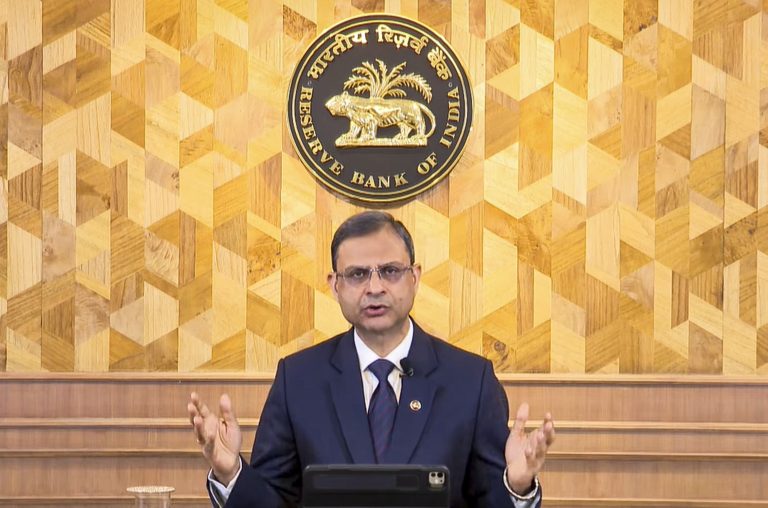MUMBAI, Feb 7: Home, auto and other loans are likely to see a drop in interest rates after the Reserve Bank of India under a new Governor cut the key benchmark rate on Friday for the first time in almost five years to spur a sluggish economy.
The Monetary Policy Committee, headed by RBI Governor Sanjay Malhotra, slashed the repo rate by 25 basis points to 6.25 per cent. This was the first reduction since May 2020 and the first revision after two-and-a-half years.
Malhotra, a career bureaucrat who replaced Shaktikanta Das barely days after the last bi-monthly MPC meeting in December, forecast the Indian economy to grow at 6.7 per cent in the fiscal year starting April 2025 while inflation rate to lower to 4.2 per cent.
For the fiscal year ending March 31, RBI quoted the government estimate to put the growth rate at 6.4 per cent, its worst in four years and lower than 6.6 per cent seen previously, while the inflation was pegged at 4.8 per cent.
The repo rate (repurchase rate) is the interest rate at which the central bank lends money to commercial banks when there is a shortage of funds. When repo rate is high, borrowing costs for banks increase, which is often passed on to consumers in the form of higher interest rates on loans. Conversely, a lower repo rate usually results in lower interest rates on loans such as home loans, car loans, and personal loans.
Repo rate also decides the returns on savings and investment products. A higher repo rate can lead to better returns on fixed deposits and other savings instruments, as banks offer higher interest rates to attract deposits. On the flip side, lower repo rates might reduce the interest earned on these savings products.
Analysts said with the rupee hitting record lows virtually every day against the US dollar, a rate cut will put pressure on domestic inflation and the currency, likely triggering capital outflows.
The MPC, which consists of three RBI and three external members, “decided unanimously to reduce the policy repo rate by 25 basis points from 6.50 per cent to 6.25 per cent,” Malhotra said.
Explaining the rationale for the decision, he said inflation has declined. “Supported by a favourable outlook on food and continuing transmission of past monetary policy actions, it is expected to further moderate in 2025-26, gradually aligning with the target (of 4 per cent).”
The MPC also noted that though growth is expected to recover from the low of July-September 2024 (when it grew by 5.4 per cent – its slowest expansion in nearly two years), it is much below than that of last year. “These growth-inflation dynamics open up policy space for the MPC to support growth, while remaining focussed on aligning inflation with the target,” he said.
Following a peak in October, consumer price inflation eased to 5.22 per cent in December and 5.48 per cent in November.
“Considering the existing growth-inflation dynamics, the MPC, while continuing with the neutral stance, felt that a less restrictive monetary policy is more appropriate at the current juncture. The MPC will take a decision in each of its future meetings based on a fresh assessment of the macroeconomic outlook,” he said.
Malhotra added that the RBI was committed to taking carefully calibrated monetary policy decisions to facilitate conducive macroeconomic conditions that reinforce price stability, sustained economic growth and financial stability.
Commenting on the MPC decision, Radhika Rao, senior economist, DBS Bank, said an emphasis on the flexibility of the inflation targeting framework suggests the MPC might be more tolerant of intermittent modest supply-driven volatility.
The GDP forecasts point to growth staying below 7 per cent this year and the next.
“This sees the RBI joining regional central banks who have given higher weightage to domestic priorities, viewing volatility in their currency and bond markets as driven by global triggers. The MPC has refrained from an outright dovish signal by maintaining the stance at neutral,” she said.
The recent rupee depreciation was not a hurdle for the policymakers, with intervention tools likely to be tapped to defend the currency vs dollar strength. “We maintain our call for another 25 bps cut in repo rate in April.”
Suman Chowdhury, chief economist, Acuité Ratings & Research, said the tone of the Governor’s speech seems to suggest that the approach to inflation targeting will be a little more flexible.
“We believe that RBI MPC has initiated a shallow rate cycle with low visibility and limited clarity on the future rate cuts. The retention of the neutral stance highlights that the policy direction may be revised depending on the incoming data points and the external environment,” Chowdhury added. (Agencies)




